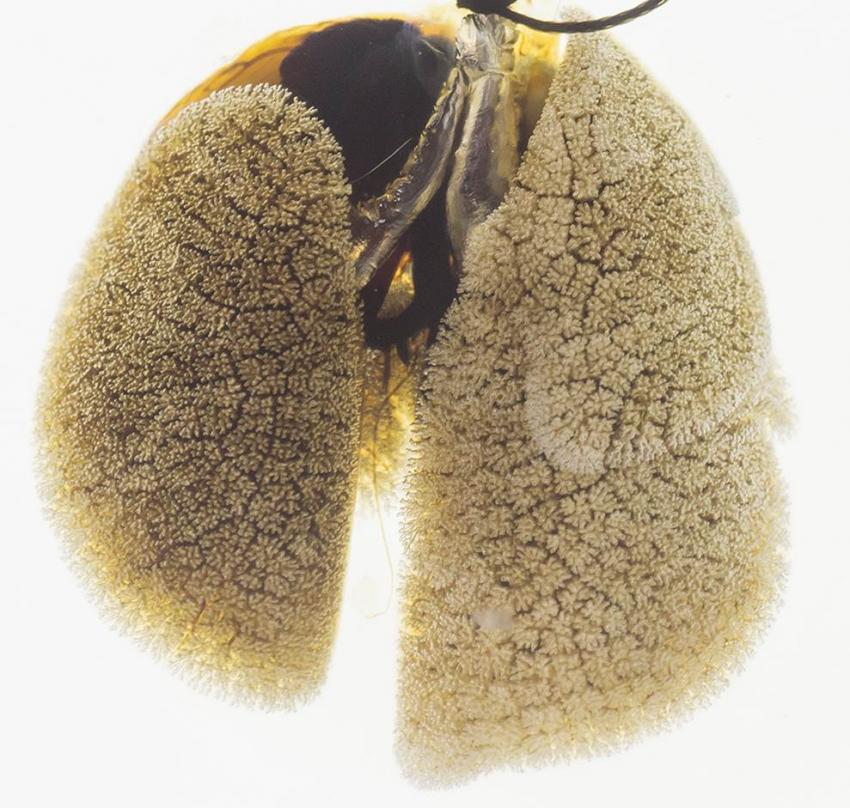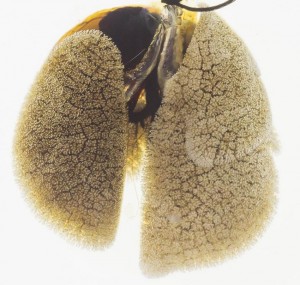Lung Regeneration Mechanism Could Impact Pulmonary Fibrosis, COPD Treatment

Pattern of alveolar oxygen exchange units on the surface of a mouse lung. Credit: Dr. Shou Ping Guan
A recent study led by Professors Frank McKeon, Ph.D., and Wa Xian, Ph.D. from The Jackson Laboratory focused on a novel lung regeneration concept and how certain lung stem cells can have a major role in that process of regenerating damaged lungs by disease. It was published in November 12 in the journal Nature.
Frank McKeon noted: “The idea that the lung can regenerate has been slow to take hold in the biomedical research community in part because of the steady decline that is seen in patients with severe lung diseases like chronic obstructive pulmonary disease (known as COPD) and pulmonary fibrosis.”
Despite this prevailing belief in the science community, there is evidence in humans that suggests the existence of a strong system for lung regeneration. “Some survivors of acute respiratory distress syndrome, or ARDS, for example, are able to recover near-normal lung function following significant destruction of lung tissue,” explained McKeon.
Experiments in mice seem to corroborate this fact. When infected with the H1N1 influenza virus, mice showed progressive inflammation in the lung and immediate loss of very important lung cell types. However, after several weeks, their lungs recovered and revealed absolutely no signs of their former injury.
Thanks to this mouse model, researchers identified in the distal airways a type of adult lung stem cell, the p63+/Krt5+. When they grew those in culture, the cells formed an alveolar-like structures very similar to the alveoli found within the lung. After the H1N1 infection, “these same cells migrated to sites of inflammation in the lung and assembled into pod-like structures that resemble alveoli, both visually and molecularly,” as in the medical express press release. In the Nature paper, Dr. McKeon reports that p63+/Krt5+ lung stem cells proliferate to the damaged area to contribute to the development of alveoli near those damaged sites.
[adrotate group=”3″]
To make sure that these cells were crucial for lung regeneration, scientist developed a system that genetically and selectively remove these cells from the lung of mice. If lacking the p63+/Krt5+ lung stem cells mice could not recover from H1N1 infection; the fundamental role of this cells was proved. Researchers also observed that when these stem cells were transplanted into damaged lung they started immediately to contribute to the formation of alveoli.
Wa Xian hopes that these results can lead to new ways of treatment to help the 200,000 people that have ARDS in the United States.








